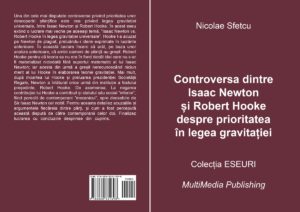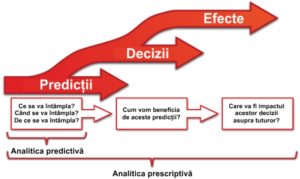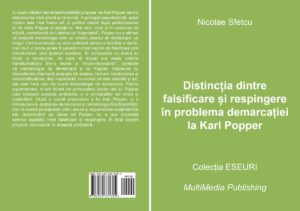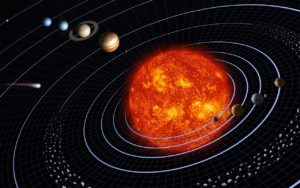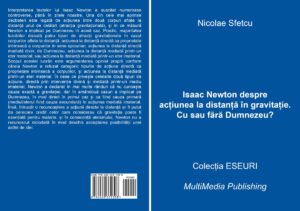Birds are among the most extensively studied of all animal groups. Hundreds of academic journals and thousands of scientists are devoted to bird research, while amateur enthusiasts (called birdwatchers or, more commonly, birders) probably number in the millions.
Birds are categorised as a biological class, Aves. The earliest known species of this class is Archaeopteryx lithographica, from the Late Jurassic period. According to the most recent consensus, Aves and a sister group, the order Crocodilia, together form a group of unnamed rank, the Archosauria.
Phylogenetically, Aves is usually defined as all descendants of the most recent common ancestor of modern birds (or of a specific modern bird species like Passer domesticus), and Archaeopteryx. Modern phylogenies place birds in the dinosaur clade Theropoda.
Modern birds are divided into two superorders, the Paleognathae (mostly flightless birds like ostriches), and the wildly diverse Neognathae, containing all other birds.
CONTENTS:
Birds
– Alektorophobia
– Avian incubation
– Bird abatement
– Bird anatomy
– – Bird skeleton
– Bird bath
– Bird feeding
– – Bird food
– – Bird feeder
– Bird flight
– – Wing clipping
– Bird intelligence
– – Language of the birds
– Nidification
Aviculture
– Domesticated birds
– – Australian Spotted
– – Barbary Dove
– – Budgerigar
– – Cayuga Duck
– – Chicken
– – Cockatiel
– – Cockatoo
– – Common Pheasant
– – Crested Guineafowl
– – Domestic Canary
– – Domesticated duck
– – Domesticated goose
– – Domesticated turkey
– – Homing pigeon
– – Indian Runner Duck
– – Khaki Campbell
– – Ostrich
– – Pekin duck
– – Quail
– – Rock Pigeon
– – Zebra Finch
– African Grey Parrot
– Bird-safe
– British finches
– Caique
– Carrier pigeon
– Citron-crested Cockatoo
– Companion parrot
– Conure
– Cyanoramphus
– Hawaiian Goose
– Hill Myna
– Kākāriki
– Lilian’s Lovebird
– Long-billed Vulture
– Moluccan Cockatoo
– Parrotlet
– – Khaki Campbell
– Pigeon racing
– Pink Pigeon
– Red-and-green Macaw
– Rose-ringed Parakeet
– Rosy-faced Lovebird
– Senegal Parrot
– Softbill
– Spix’s Macaw
– Sun Parakeet
– Umbrella Cockatoo
Bird migration flyways
– Flyway
– Atlantic Flyway
– Central Flyway
– East Asian – Australasian Flyway
– Mississippi Flyway
– Pacific Flyway
Bird topography
– Beak
– Supercilium
Birds by classification
– Extinct birds
– – (Probably) Extinct birds
– – Late Quaternary prehistoric birds
– – Paleornithology
– – Fossil birds
– – Neornithes
– – Aves incertae sedis
– Suborders of birds
– – Corvida
– – Artamidae
– – Artamus
– – Cracticus
– – Gymnorhina
– – Currawong
– – Atrichornithidae
– – Callaeidae
– – Campephagidae
– – Cinclosomatidae
– – Psophodes
– – Climacteridae
– – Corcorachidae
– – Corvidae
– – Aphelocoma
– – Cissa
– – Corvus
– – Raven
– – Crypsirina
– – Cyanocitta
– – Cyanocorax
– – Cyanolyca
– – Cyanopica
– – Garrulus
– – Nucifraga
– – Perisoreus
– – Pica
– – Podoces
– – Pyrrhocorax
– – Urocissa
– – Dicruridae
– – Drongos
– – Monarchinae
– – Lamprolia
– – Rhipidurinae
– – Tersiphone
– – Icteridae
– – Irenidae
– – Laniidae
– – Malaconotidae
– – Tchagra
– – Maluridae
– – Meliphagoidea
– – Meliphagidae
– – Acanthorhynchus
– – Anthochaera
– – Manorina
– – Moho
– – Philemon
– – Phylidonyris
– – Menuridae
– – Neosittidae
– – Oriolidae
– – Orthonychidae
– – Pachycephalidae
– – Pitohui
– – Paradisaeidae
– – Pardalotidae
– – Pardalote
– – Petroicidae
– – Pityriaseidae
– – Pomatostomidae
– – Prionopidae
– – Ptilonorhynchidae
– – Turnagridae
– – Vangidae
– – Vireonidae
– – Passeri
– – Passerida
– – Aegithalidae
– – Aegithinidae
– – Alaudidae
– – Alauda
– – Chersophilus
– – Eremophila
– – Lullula
– – Melanocorypha
– – Buphagidae
– – Cardinalidae
– – Grosbeak
– – Certhiidae
– – Chaetopidae
– – Cinclidae
– – Cisticolidae
– – Coerebidae
– – Dicaeidae
– – Drepanididae
– – Melamprosops
– – Psittirostra
– – Vestiaria
– – Emberizidae
– – Ammodramus
– – Calamospiza
– – Calcarius
– – Chondestes
– – Emberiza
– – Geospizini
– – Juncos
– – Passerculus
– – Passerella
– – Pipilo
– – Pooecetes
– – Seedeater
– – Spizella
– – Zonotrichia
– – Estrildidae
– – Padda
– – Fringillidae
– – Carduelis
– – Carpodacus
– – Coccothraustes
– – Eophona
– – Euphoniinae
– – Chlorophonia
– – Euphonia
– – Fringilla
– – Leucosticte
– – Loxia
– – Pinicola
– – Pyrrhula
– – Rhodopechys
– – Serinus
– – Hirundinidae
– – Pseudochelidoninae
– – Hypocoliidae
– – Leafbirds
– – Melanocharitidae
– – Mimidae
– – Motacillidae
– – Muscicapidae
– – Ficedula
– – Saxicolinae
– – Cercotrichas
– – Cochoa
– – Copsychus
– – Cossypha
– – Enicurus
– – Erithacus
– – Luscinia
– – Oenanthe
– – Phoenicurus
– – Saxicola
– – Sheppardia
– – Nectariniidae
– – Nuthatches
– – Old World babblers
– – Paradoxornithidae
– – Paramythiidae
– – Paridae
– – Pseudopodoces
– – Parulidae
– – Dendroica
– – Seiurus
– – Vermivora
– – Passeridae
– – Peucedramidae
– – Picathartidae
– – Platysteiridae
– – Ploceidae
– – Polioptilidae
– – Promeropidae
– – Prunellidae
– – Ptilogonatidae
– – Pycnonotidae
– – Regulidae
– – Remizidae
– – Rhabdornithidae
– – Sturnidae
– – Acridotheres
– – Aplonis
– – Gracula
– – Sturnus
– – Sylviidae
– – Acrocephalus
– – Bradypterus
– – Chamaea
– – Hippolais
– – Locustella
– – Orthotomus
– – Phylloscopus
– – Sylvia
– – Thraupidae
– – Cyanerpes
– – Habia
– – Piranga
– – Ramphocelus
– – Spindalis
– – Tangara
– – Thraupis
– – Troglodytidae
– – Campylorhynchus
– – Troglodytes
– – Turdidae
– – Alethes
– – Bluebirds
– – Catharus thrushes
– – Myadestes
– – Rock thrushes
– – Zoothera
– – Viduidae
– – Waxwings
– – Zosteropidae
– – Zosterops
– – Tyranni
– – Acanthisittidae
– – Conopophagidae
– – Cotingidae
– – Cephalopterus
– – Procnias
– – Rupicola
– – Eurylaimidae
– – Calyptomena
– – Formicariidae
– – Furnariidae
– – Furnarius
– – Pseudocolaptes
– – Xenops
– – Philepittidae
– – Pipridae
– – Chiroxiphia
– – Manacus
– – Pitta
– – Rhinocryptidae
– – Thamnophilidae
– – Tyrannidae
– – Aphanotriccus
– – Attila
– – Contopus
– – Empidonax
– – Lathrotriccus
– – Myiarchus
– – Myiozetetes
– – Sayornis
– – Tityra
– – Tyrannus
– Parvorders of birds
– Superfamilies of birds
– – Anatoidea
– Bird families
– – Bird families – A
– – Accipitridae
– – Aegothelidae
– – Aepyornithidae
– – Alcedinidae
– – Alcidae
– – Anhingidae
– – Apterygidae
– – Bird families – B
– – Bucerotidae
– – Bird families – C
– – Caprimulgidae
– – Casuariidae
– – Cathartidae
– – Charadriidae
– – Chionididae
– – Columbidae
– – Bird families – D
– – Dendrocolaptidae
– – Dinornithidae
– – Dromadidae
– – Dromornithidae
– – Bird families – E
– – Bird families – F
– – Falconidae
– – Fregatidae
– – Bird families – G
– – Gastornithidae
– – Bird families – H
– – Haematopodidae
– – Hydrobatidae
– – Bird families – I
– – Ibidorhynchidae
– – Bird families – L
– – Bird families – M
– – Mesitornithidae
– – Bird families – N
– – Bird families – O
– – Bird families – P
– – Pedionomidae
– – Phaethontidae
– – Phalacrocoracidae
– – Phasianidae
– – Phorusrhacidae
– – Picidae
– – Plotopteridae
– – Pluvianellidae
– – Podicipedidae
– – Presbyornithidae
– – Psittacidae
– – Pteroclididae
– – Bird families – R
– – Rallidae
– – Raphidae
– – Rostratulidae
– – Bird families – S
– – Scolopacidae
– – Spheniscidae
– – Strigidae
– – Sulidae
– – Sylviornithidae
– – Bird families – T
– – Teratornithidae
– – Tetraonidae
– – Threskiornithidae
– – Trochilidae
– – Tytonidae
– – Bird families – V
– – Bird families – W
– Subfamilies of birds
– – Bucorvinae
– – Anatinae
– – Anserinae
– – Buteoninae
– – Chordeilinae
– – Mancallinae
– – Merginae
– – Palaeeudyptinae
– – Phaethornithinae
– – Tadorninae
– – Vanellinae
– Tribes of birds
– – Nestorini
– – Platycercini
– Passeriformes
– Carinatae
Birds by geography
– Endemism in birds
– Birds of Africa
– Birds of Asia
– Birds of Australia
– – List of Australian, New Zealand and Antarctic birds
– – List of Australian birds
– Birds of Europe
Birds of prey
– Eagles
– Falconry
– Falcon
– Harrier
– Kites
– Old World vulture
– Owls
– True hawks
Birdwatching
Bird diseases
– Angel Wing
– Avian adenovirus
– Avian flu
– – Transmission and infection of H5N1
– Bumblefoot
– Gallid herpesvirus 1
– Scaly leg
Famous birds
Feathers
– Plumage
Fictional birds
– Fictional ducks
Flightless birds
– Struthioniformes
Heraldic birds
– American Robin
– Andean Condor
– Blue Jay
– Caladrius
– Canada Goose
– Canary
– Cassowary
– Condor
– Double-headed eagle
– Duck
– Emu
– Goose
– Heron
– Ibis
– Kingfisher
– Kookaburra
– Macaw
– Martlet
– Osprey
– Partridge
– Peafowl
– Pelican
– Pheasant
– Puffin
– Rooster
– Secretary Bird
– Snipe
– Spotted Eagle Owl
– Stork
– Swan
– Toucan
– Vulture
Oology
– Egg
– Ornithology
Poultry
Seabird
– Albatrosses
– Gannets
– Gulls
– – Larus
– Pterodroma
– Shearwaters
– Skuas
– Terns
Shorebirds
– Recurvirostridae
– – Recurvirostra
Swifts

